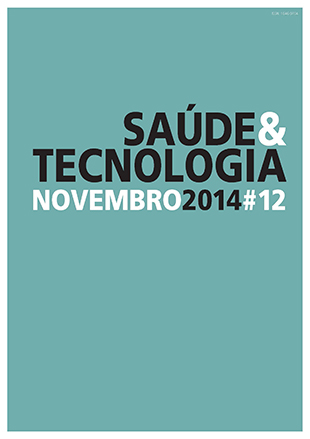The effect of a physiotherapy program in the premature infant's stabilization
DOI:
https://doi.org/10.25758/set.1114Keywords:
Physiotherapy, Premature, Neonatology intensive care unit, Positioning, OximetryAbstract
The number of babies born prematurely has increased. The importance of research and technological development in Intensive Care Neonatology Units (NICU) is unquestionable as well as the essential role played by physiotherapists in the care of these babies. Their development is only enhanced when stimulation and positioning are applied. A pilot study was applied in the NICU of the North Lisbon Hospital Centre (CHLN), between July 2011 and March 2012, to assess the physiotherapy program's effect on premature infant stabilization. This program consisted of positioning the premature in the supine position, right and left lateral decubitus, and prone position, remaining in each position for five minutes. The objective was to evaluate the change in the following parameters during the stay of the baby in the NICU: heart rate (HR) and oxygen saturation (SpO2) before and after treatment. A convenience sample was selected and included 30 premature infants, 13 females and 17 males, who followed the specific criteria for inclusion. To verify the physiological variables HR and SpO2 used a BCI 3401 Pulse Oximetry. It was found that HR decreased and SpO2 increased between the first and second assessments estimate for the total sample, as well as the female and male gender of the subjects, α = 0.05 and p-value (p≤0,001). However, the difference between the average of both periods of HR and SpO2 by gender did not show statistically significant differences. In conclusion, this study suggests that the physiotherapy program improved the SpO2 and HR decrease, promoting a better stabilization of premature infants.
Downloads
References
Moniz C, Ramalho P, Abrantes M. Departamento da criança e da família – Unidade Coordenadora Funcional Setentrional (Área materna e neonatal): relatório do ano 2010. Lisboa: Centro Hospitalar Lisboa Norte; 2011.
Almeida V. Natalidade, mortalidade e esperança de vida à nascença nos concelhos portugueses: uma correção pela estrutura etária. Lisboa: Instituto Nacional de Estatística; 2001.
Sarmento GJ. Fisioterapia respiratória em pediatria e neonatologia. 2ª ed. Rio de Janeiro: Manole; 2011. ISBN 9788520431290
Campos D, Santos DC, Gonçalves VM. Importância da variabilidade na aquisição de habilidades motoras [Importance of variability in the acquisition of motor’s abilities]. Rev Neurociênc. 2005;13(3):152-7. Portuguese
Hussey-Gardner B, Famuyide M. Developmental Interventions in the NICU: what are the developmental benefits? NeoReviews. 2009;10(3):e113-20.
Brady A, Smith P, Neonatal Group of Association of Paediatric Chartered Physiotherapists. A competence framework and evidence-based practice guidance for the physiotherapist working in the neonatal intensive care and special care unit in the United Kingdom. Association of Paediatric Chartered Physiotherapists; 2011.
Ahmed SJ, Rich W, Finer NN. The effect of averaging time on oximetry values in the premature infant. Pediatrics. 2010;125(1):e115-21.
Laptook AR, Salhab W, Allen J, Saha S, Walsh M. Pulse oximetry in very low birth weight infants: can oxygen saturation be maintained in the desired range? J Perinatol. 2006;26(6):337-41.
Wasunna A, Whitelaw AG. Pulse oximetry in preterm infants. Arch Dis Child. 1987;62(9):957-8.
Leader D. Pulse oximetry. Medical Review Board; 2011.
Beyssac-Fargues C. L’environnement d’un bébé en néonatologie. [s.n.]; 2002.
Coutinho CP. Metodologia de investigação em ciências sociais e humanas: teoria e prática. Coimbra: Almedina; 2011. ISBN 9789724044873
Goodwin CJ. Research in psychology: methods and design. 3rd ed. New York: Wiley; 2002. ISBN 9780471398615
Marôco J. Análise estatística com o PASW Statistics (ex-SPSS). Pêro Pinheiro: Report Number; 2010. ISBN 9789899676305
Hernandez-Reif M, Diego M, Field T. Preterm infants show reduced stress behaviors and activity after 5 days of massage therapy. Infant Behav Dev. 2007;30(4):557-61.
Rodríguez Cardona MC. Fisioterapía en el niño prematuro. In Fisioterapia infantil práctica. Badajoz: Abecedário; 2005. p. 327-33. ISBN 9788493408961
Ratliffe KT. Fisioterapia na clínica pediátrica: guia para a equipe de fisioterapeutas. São Paulo: Santos; 2000. ISBN 8572882340
Solomon JW, O’Brien JC. Pediatric skills for occupational therapy assistants. 3rd ed. Mosby; 2011. ISBN 9780323059107
Silva VF, Silva AP. Desenvolvimento motor do bebé: efeito de um programa sensório-motor em prematuros na unidade de CTI [Infant motor development: effects of a sensory-motor program on premature infants in ITC]. Fit Perform J. 2003;2(4):207-12. Portuguese
Sweeney JK, Heriza CB, Blanchard Y, Dusing SC. Neonatal physical therapy. Part II: Practice frameworks and evidence-based practice guidelines. Pediatr Phys Ther. 2010;22(1):2-16.
Jorgensen KM. Cuidados para a promoção do desenvolvimento do bebé prematuro. Children`s Medical Ventures; 1997.
Campbell SK, Linden DW, Palisano RJ. Physical therapy for children. 3rd ed. Elsevier; 2006. ISBN 9780721603780
Marcellus L. Determination of positional skin-surface pressures in premature infants. Neonatal Netw. 2004;23(1):25-30.
Downloads
Published
Issue
Section
License
Copyright (c) 2022 Saúde e Tecnologia

This work is licensed under a Creative Commons Attribution-NonCommercial-NoDerivatives 4.0 International License.
The journal Saúde & Tecnologia offers immediate free access to its content, following the principle that making scientific knowledge available to the public free of charge provides greater worldwide democratization of knowledge.
The journal Saúde & Tecnologia does not charge authors any submission or article processing charges (APC).
All content is licensed under a Creative Commons CC-BY-NC-ND license. Authors have the right to: reproduce their work in physical or digital form for personal, professional, or teaching use, but not for commercial use (including the sale of the right to access the article); deposit on their website, that of their institution or in a repository an exact copy in electronic format of the article published by Saúde & Tecnologia, provided that reference is made to its publication in Saúde & Tecnologia and its content (including symbols identifying the journal) is not altered; publish in a book of which they are authors or editors the total or partial content of the manuscript, provided that reference is made to its publication in Saúde & Tecnologia.







